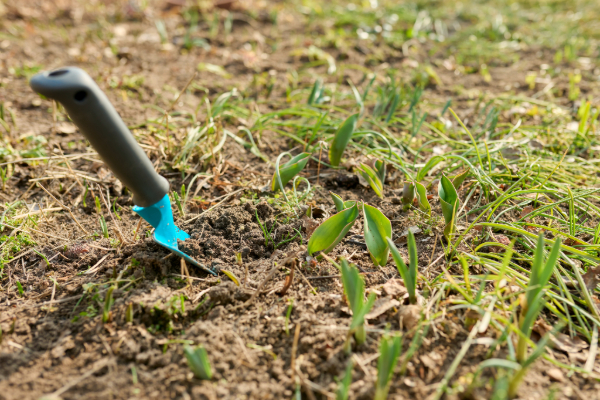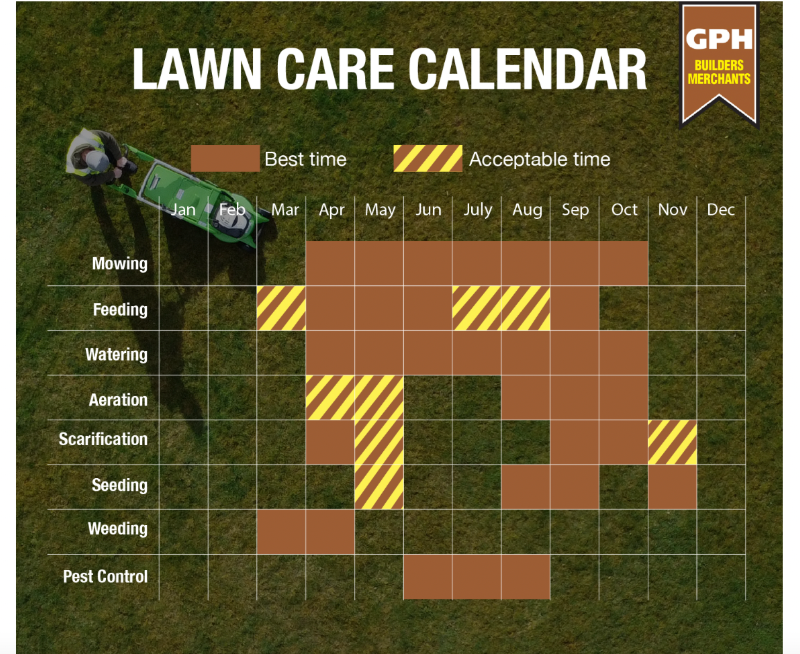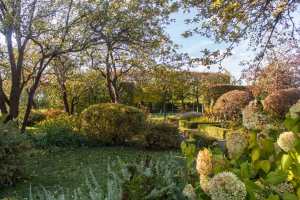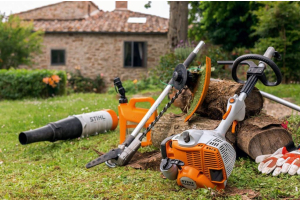GPH Lawn Guide: How To Care For Your Lawn

Welcome to our ultimate guide to lawn care, just in time for the summer! GPH are here to help, as we understand the importance of a well-kept lawn and the satisfaction it brings to homeowners.
In this comprehensive guide, we'll provide you with expert advice, practical tips, and product recommendations to help you achieve your lawn goals. Whether you have a green thumb or you're just starting out, our aim is to equip you with the knowledge and resources you need for successful lawn maintenance.
What is Lawn Care?
Looking to give your lawn a bit more love but have no clue where to begin? No worries, we have put together some important processes for you to remember to keep your lawn looking great.
- Lawnmowing
- Scarifying
- Weeding
- Aerating
- Seeding
- Watering/Fertilising
- Edging
The more regularly you care for your lawn, the better. Don't leave lawn maintenance for just the summer months, keep your garden looking healthy all year round with seasonal lawn care. Take into consideration the climate where you live, as that may impact your lawn care actions.
Lawnmowing
One of the fundamental aspects of proper lawn care is regular mowing, which serves two essential purposes: maintaining the aesthetic appeal of your garden and promoting healthy grass growth.
By mowing regularly, you not only enhance the appearance of your lawn but also stimulate the roots of the grass to spread, fill any gaps and discourage the growth of weeds. It's the deeper roots that contribute to the overall strength and vitality of your grass. Therefore, it is crucial to ensure that your lawnmower is well-maintained, with sharp mower blades before each use.
We have a number of fantastic lawnmowers at GPH, with the Stihl Cordless Lawnmower being a best seller. Cordless lawnmowers are an innovative solution for lengthy gardens, or areas of grass with no access to a socket. They also allow easy accessibility and manoeuvring, so you can effectively mow hassle-free.
If you're after a petrol-powered lawnmower, the Stihl RM 248.1 Petrol Lawnmower is another fantastic option. With central cutting height adjustment and foldable handlebars, it's perfect for beginners and for storing.
By keeping your lawnmower in good working order, you can achieve a clean and precise cut while protecting your safety.
Grass Cutting Height
Determining the right cutting height for your grass depends on several factors. For an open lawn with ample sunlight exposure, a cutting height between 2.5cm to 4cm is generally a good length.
However, for areas that experience heavier foot traffic or will be used for garden furniture, allowing an additional centimetre or two in height can be beneficial, as it will help protect the soil from the weight, and create a comfortable surface for your guests! On the other hand, shaded areas require leaving the grass slightly longer, typically around 7cm to 8cm, to promote optimal growth.
To ensure good mowing conditions, mow your lawn on a dry day. During the summer season, it's good to mow your lawn every week, but for the rest of the year, mowing every two to three weeks is generally sufficient.

Scarifying
Although it looks like a 'scary' (no pun intended) process, scarifying your lawn is super simple.
What is scarifying?
Scarifying is essentially getting rid of the brown areas of your grass, whether it be dead grass moss or undergrowth. This is also known as 'thatch'. You can do this process either using a rake or scarifying machine. The Stihl Petrol Scarifier is a fantastic option for this process, as it can tackle any size of lawn, and gives you full cordless control. Scarifying is an important part of lawn care, as undergrowth when left can prevent water and fertilisers from reaching the roots and soil.
Don't worry about any bare patches you might have afterwards, these will only allow more airflow to get around the grass, promoting bright green healthy growth!
The best part is that you only need to scarify your lawn once or twice a year! In the UK, the best time to do this is during spring, so your lawn will look perfect for the summer. A good tip to remember before scarifying is to spray weedkiller a few weeks beforehand, to avoid spreading more moss spores across the area.
Weeding
Effective weed control plays a crucial role in maintaining a healthy lawn. When tackling weeds, it's important to completely remove the entire plant, including its roots, to prevent regrowth within your lawn. Manual removal by hand or using tools like a weed extractor are effective methods.
Furthermore, enhancing the overall health and quality of your grass will naturally deter weed growth. In cases where a large concentration of weeds exists, commercial weed killers can be used by directly spraying them onto the area.

Aerating
Aeration is the process of poking small, long holes into the ground in order to give the soil good air circulation and improve the roots' water and nutrient consumption.
A good time to aerate a lawn is when the grass is slightly wet, an ideal time for this would be a day or two after it has rained, or after watering. All you need to do is get yourself a pair of aerator shoes, or a motorised aerator. Using the shoe tactic may be fun, but it might take some time!
Seeding
Re-seeding your lawn is a vital step in rejuvenating thin or dying patches of grass. This process is typically performed on an annual basis to maintain a healthy lawn. Before seeding, it is crucial to prepare your lawn by scarifying and aerating it.
Scarification involves removing dead grass and moss, allowing better access for the new seeds to take root. Aeration helps to alleviate soil compaction, improving water and nutrient absorption.
To get an even distribution of seeds, you can use special tools called spreaders, which ensure proper coverage across your lawn. It's important to keep your lawn relatively moist during the germination process, to promote the growth of the newly seeded grass.
Watering and Fertilising
It's super important to water your lawn, especially during the hot summer months. You have a few options for watering, including using a hose or sprinkler connected to a mains water supply.
You want to avoid overwatering the area, as excessive moisture can actually harm your lawn!
The frequency and amount of watering required depends on the climate, area and soil conditions of your lawn.
Top tip! A useful indicator to determine when to water is by looking at the colour of your grass. If you notice any duller or less vibrant colours, it's a sign that your lawn may need a drink.
In addition to watering, applying fertilisers on your lawn twice a year is good for boosting healthy growth. If you have concerns about using chemical-based fertilisers in your garden (some may not be safe for certain pets) don't worry! There are plenty of organic options available that can still offer effective nourishment for your lawn.
Edging
Untidy edges can be an eye sore when your lawn is looking good and strong. A lawnmower doesn't quite cut it for tidying your lawn's border, so we recommend investing in a lawn edging tool. This tool can allow you to create a bold border around your lawn and get rid of any uneven sides and stragglers.
Lawn Care Calendar
To give you an idea of how to care for your lawn through the seasons, here is a simple guide that takes you through some crucial do's and don'ts! (This is based on the average weather conditions in the UK)







